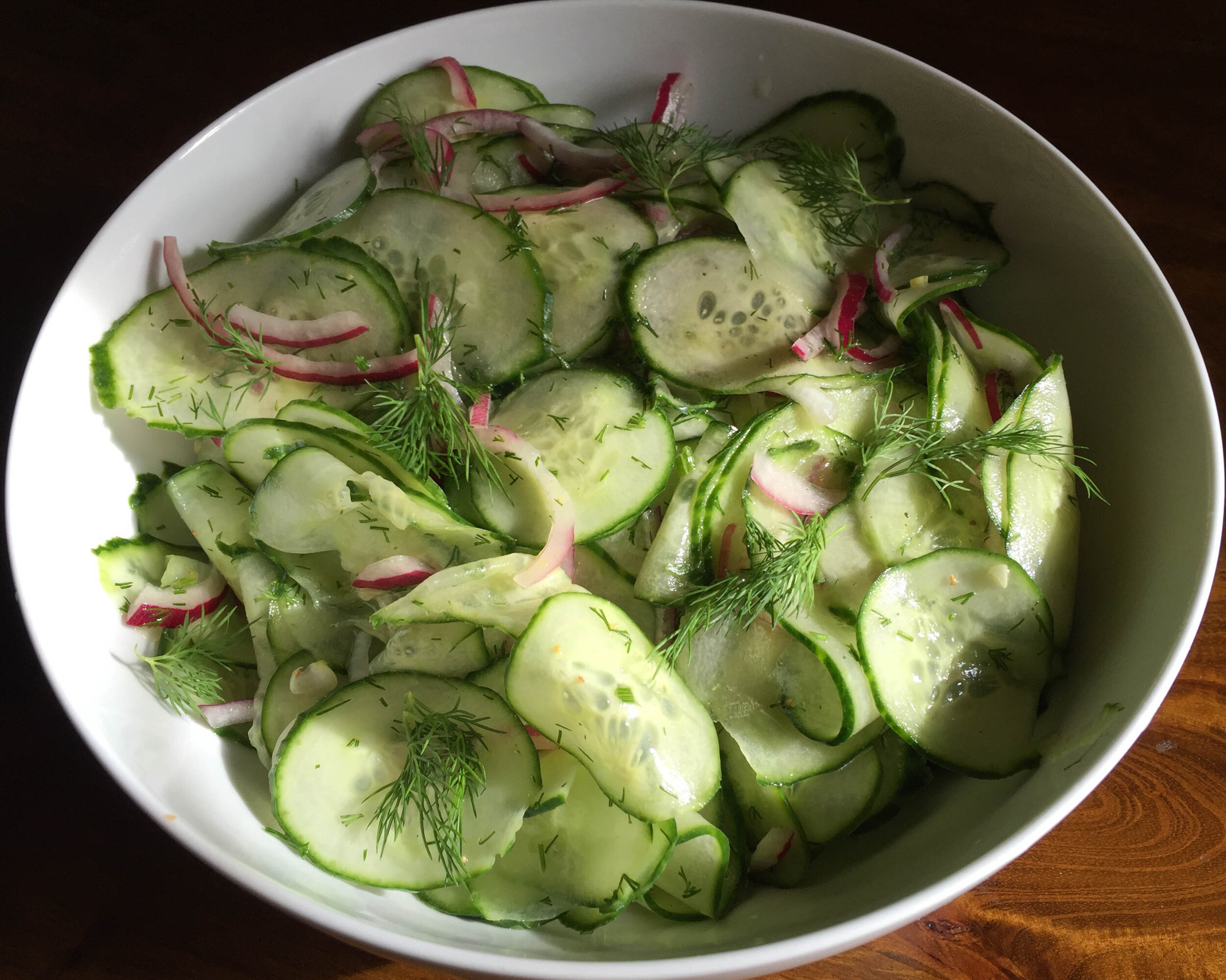Blimey, we all need a chill pill! In the absence of an effective one, we’ve been turning to the coolest of vegetables, the cucumber.
The Oxford Companion to Food tells us that the cucumber is “one of the oldest cultivated vegetables,” that it has been grown for some 4,000 years, that it may have originated in South India and that Christopher Columbus introduced it to Haiti in 1494. Jessica B. Harris points out, however, in The Africa Cookbook, that the some scholars feel that the cucumber may have come from Central Africa.
But wait — isn’t “one of the oldest cultivated vegetables” technically a fruit?
“It is a fruit,” says my friend Tim Simmonds, a Dallas botanist — and so are squashes, both summer and winter, including pumpkins. “Same big happy family.”
The curcurbit family, that is: the vine-y plant group that also includes watermelons, chayotes, gourds, cassabananas (a.k.a. melocotón) and the kiwano (a.k.a. African horned cucumber or jelly melon).
Given the cucumber’s origin story, it’s not surprising that it is popular in India — especially in the form of raita.
The cooling cucumber salad accompanies just about any kind of Indian meal, of course. But I’ve been known to enjoy a bowl of it on its own for a soothing lunch (particularly in a pandemic!).
Ours features grated cucumber, toasted cumin and a touch of lemon juice.
A Cucumber Sunomono was literally the first recipe we test-drove for our recent review of Sonoko Sakai’s Japanese Home Cooking, since the cucumber salad is a frequent starter of Japanese meals. This one, which weaves wakame seaweed in with the cukes, sports a jaunty grated-ginger garnish. We fell in love, not surprisingly. Maybe you will, too (let us know in a comment!).
Cucumbers also make appearances in Sakai’s recipe for Potato Salada and Dallas chef Justin Holt’s Salaryman Potato Salad.
But we’re not counting those in our four, so wait, there’s more!
This pretty Cucumber, Radish and Feta Salad came together as we riffed on a Levantine dish called khiar bel na’na, starring thin-sliced cukes, dried mint and orange-blossom water. We added radishes, scallions, feta and fresh mint (which layers beautifully with the dried). Lately it has become a house favorite.
And finally, this Scandanavian Cucumber-Dill Salad — which is wonderful with poached salmon, Cold Poached Arctic Char or even Swedish meatballs.
A happy development, at least in my neck of the woods, is that organic Persian cucumbers have become more readily available, even during the pandemic. They have lovely texture (as long as they’re nice and fresh), they’re less watery than English cukes but more flavorful than most hothouse cukes, and they don’t require peeling — a win win win. Though sizes for all kinds vary, generally speaking you can figure two Persian cucumbers for one medium English cucumber, or three for a large English cuke.
As you’ll see from the above recipes, many cultures salt cucumbers and let them sit to draw out the water and ensure great texture; sometimes gentle squeezing is called for as well. Hope you enjoy these refreshing treats.
Stay cool. Think cuke. Wear a mask. Stay healthy.












